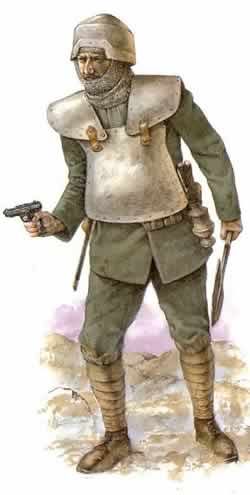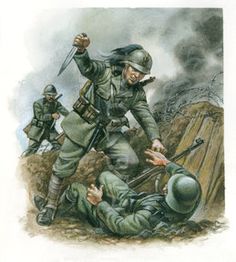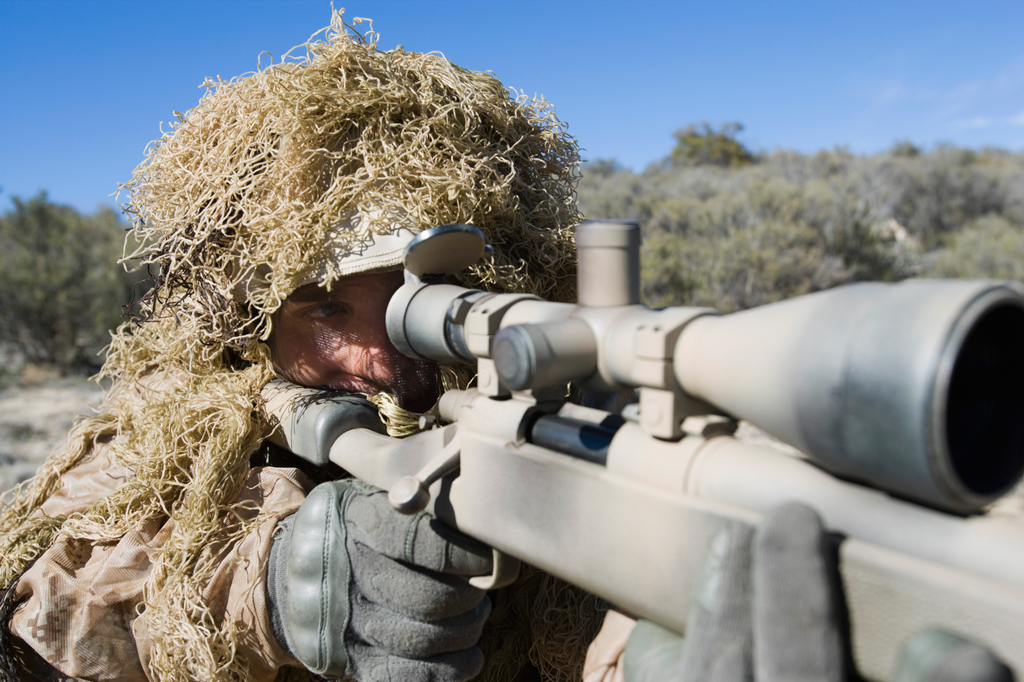
Trench Raiding Clubs of WWI
Far Outweighs the Firepower in Trench Warfare
 You would think having extreme fire power would be the ideal thing to have when entrenched in a world war. However, in trench warfare during World War I having medieval/zombie types of weaponry was a better choice and more effective while fighting in the trench at close quarter.
You would think having extreme fire power would be the ideal thing to have when entrenched in a world war. However, in trench warfare during World War I having medieval/zombie types of weaponry was a better choice and more effective while fighting in the trench at close quarter.Trench raiding clubs were homemade melee weapons used by both the Allies and the Central Powers during World War I. These raiding clubs were used during night time trench raiding expeditions as a quiet and effective way of killing or wounding the enemy.
The objective of trench night raids were either to knock out a machine gun nest, reconnoiter or just putting pressure on the enemy.
At this close range the bolt-action rifles were ineffective after a shot due to the long reloads time. Using the bayonet requires stabbing a man before engaging another enemy, you must first withdraw the blade from the bad guy’s flesh. Again, time is the problem here.
This may have been the reason why improvised raiding clubs came to be about, there was no more reload time at close quarter melee. So, troops grabbed old pieces of wood and converted them into weapons.
The clubs were usually made out of wood with metal object at the striking end for maximizing the injury inflicted. Bosnian soldiers serving in the Austro-Hungarian army were fond of using maces. They were also used by officers to finish enemy soldiers wounded by poison gas attacks.
Trench clubs were manufactured in bulk by units based behind the lines. Typically, regimental carpenters and metal workers would make large numbers of the same design of club.
They were generally used along with other melee weapons such as trench knives, entrenching tools, bayonets, hatchets and pick axe handles – backed up with revolvers and hand grenades.
Common Design
A common design is with a simple stave with the end drilled out and a lead weight inserted, with rows of large hobnails hammered in around its circumference. Most designs had some form of cord or leather strap at the end to wrap around the user’s wrist.
Things that you Didn’t Know about these Zombie Raiding Clubs

A common attack tactics used in the black of night, is to have the raiders crawl across the dangerous area between friendly and enemy fortifications known as “no man’s land” and navigate through the enemy’s trenches, then quietly club their opposers without raising alarm.
Bigger the better, a medium-sized club worked best within the confined spaces typical of trench warfare. The average club was approximately 40-centimeters long, which is, basically, the length of a standard classroom ruler plus 3 inches.
Trench clubs weren’t part of the G.I. standard issue, so troops would improvise with materials found in the trenches and/or put them together themselves or have unit’s carpenter do it. Nails, the shell of a Mills’ bomb, and a variety metal components were affixed the clubs, usually in mass quantities, to increase lethality.
Springs give it more effective punch at the point of impact. The club handle was made up of leather, a flexible metal coil as the base, and a metal head. Various other heads, like smalls metals balls and star-shaped blades, were also affixed to clubs.
Trench Knife

Despite having the bayonet attached to the rifle, both the Allies and the Germans made use of trench knives. The Germans actually issue their troops trench knives. (Nahkampmesser) This knife was issued during World War II as well.
The British Army did not have an issued trench knife. What they did was shortened their bayonets or metal spikes attached to the handles.
The French Army actually did come out with a trench knife called the French nail (the Poingnard-Baïnnotte Lebel M1886). This was a metal stake, one end bent into a handle, the other having a stiletto-like spike attached.
Push daggers are not new, they date back to perhaps 16th Century India. Europeans and Americans took up the weapon in the 19th Century. The push dagger had a short blade set into a “T”shaped handle, which was designed to be gripped between the index and middle finger, with the blade facing out from the front of the fist.



